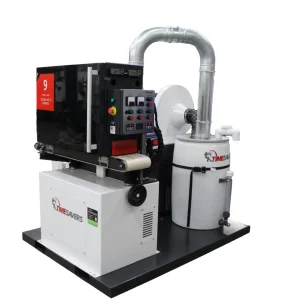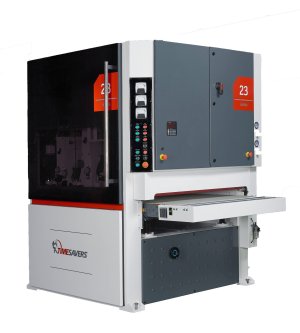onocoffee
Member
Came across a seller trying to move a used Grizzly F0716 10/20 drum sander and asking $215 for it. The sander currently is inoperational with a kink in the power cord. Seller says he had replaced the circuit board in an attempt to get it running and also "opened up the motor" (don't know what that necessarily means) and that it is "in perfect shape". He did note that the motor fan blade was broken and needed to be replaced. And that the dust hood is missing.
New, from Grizzly, the sander is listed for $870 (plus $199 freight) for a total of $1,069*.
*I could order Grizzly from Home Depot and they will deliver it to my local store for pickup with no freight fees.
From the pics, I've determined that these are the parts that would need to be replaced (currently):
Motor Fan - $9.75
Motor Fan Cover - $18.00
Dust Hood - $15.00
Hood Elbow - $10.00
Drum Housing Support Bracket - $8.25
M8 Knob - $5.75
So, maybe $90 in parts, including a replacement wire and plug. But, if the motor is actually dead, a new 1hp costs $626. Which pushes it well over the cost of a new unit. I offered $150 and he said that a couple people had already offered that amount and that he's going to hold out to see if he can recoup what he put into it plus the $30 for the circuit board and that number is $200.
I'm tempted to meet the asking price of $200 but I have no experience with drum sanders. All I know is that the SuperMax and Jet drum sanders I see at Woodcraft are quite pricey. I'm interested in the drum sander because I'm planning on resawing 1/16" veneers and figure the drum sander would be good to smoothen those veneers. The 10" width I don't think is an issue since that will be typically wider than most of the veneers I see myself cutting (max capacity on the saw is 12").
Thanks!
New, from Grizzly, the sander is listed for $870 (plus $199 freight) for a total of $1,069*.
*I could order Grizzly from Home Depot and they will deliver it to my local store for pickup with no freight fees.
From the pics, I've determined that these are the parts that would need to be replaced (currently):
Motor Fan - $9.75
Motor Fan Cover - $18.00
Dust Hood - $15.00
Hood Elbow - $10.00
Drum Housing Support Bracket - $8.25
M8 Knob - $5.75
So, maybe $90 in parts, including a replacement wire and plug. But, if the motor is actually dead, a new 1hp costs $626. Which pushes it well over the cost of a new unit. I offered $150 and he said that a couple people had already offered that amount and that he's going to hold out to see if he can recoup what he put into it plus the $30 for the circuit board and that number is $200.
I'm tempted to meet the asking price of $200 but I have no experience with drum sanders. All I know is that the SuperMax and Jet drum sanders I see at Woodcraft are quite pricey. I'm interested in the drum sander because I'm planning on resawing 1/16" veneers and figure the drum sander would be good to smoothen those veneers. The 10" width I don't think is an issue since that will be typically wider than most of the veneers I see myself cutting (max capacity on the saw is 12").
Thanks!
Attachments
-
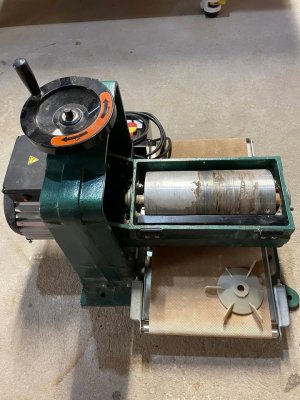 572149671_25043445425322818_8035417165793453092_n.jpg108.5 KB · Views: 15
572149671_25043445425322818_8035417165793453092_n.jpg108.5 KB · Views: 15 -
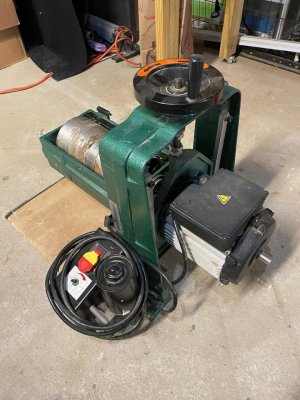 576407650_1582928593067456_8559883832223236153_n.jpg119.8 KB · Views: 12
576407650_1582928593067456_8559883832223236153_n.jpg119.8 KB · Views: 12 -
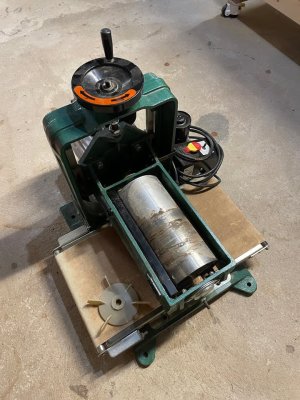 576450323_2029174974585260_8426033586448219828_n.jpg120.7 KB · Views: 11
576450323_2029174974585260_8426033586448219828_n.jpg120.7 KB · Views: 11 -
 576489781_1410932273787234_1755227466000480647_n.jpg134 KB · Views: 11
576489781_1410932273787234_1755227466000480647_n.jpg134 KB · Views: 11 -
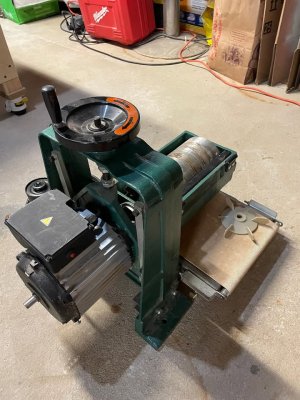 576655453_1511930930072540_263033572364078874_n.jpg114.2 KB · Views: 11
576655453_1511930930072540_263033572364078874_n.jpg114.2 KB · Views: 11 -
 577341586_1555129592289359_8885728532494904517_n.jpg126.9 KB · Views: 16
577341586_1555129592289359_8885728532494904517_n.jpg126.9 KB · Views: 16

